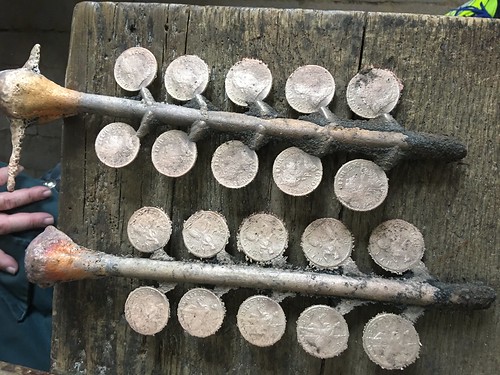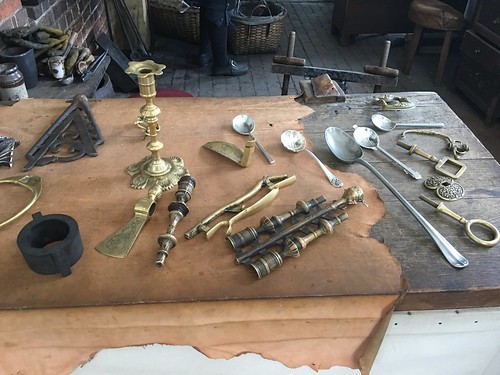
PREV ARTICLE
NEXT ARTICLE
FULL ISSUE
PREV FULL ISSUE
COIN CASTING AT COLONIAL WILLIAMSBURGThe Summer 2020 issue of the C4 Newsletter from the Colonial Coin Collectors Club featured an article by Jeff Rock about coin casting at Colonial Williamsburg. With permission, we're publishing an excerpt here. Thanks to Jeff and editor Will Nipper for making the text and images available. -Editor By Jeff Rock In the Winter, 2017 issue of C4N, I wrote about a trip to Colonial Williamsburg and urged readers who haven't gone to make time for a visit. I was set for a repeat visit in March of this year, after the Baltimore coin show – but a virus had other ideas, closing that show and Williamsburg too. There are always silver linings though, and since I couldn't go for an actual visit, I looked at some photos of my trip and reread the article I wrote. Imagine my surprise when I found I had promised a second article – which I had promptly forgot about when something shiny diverted my attention. Squirrel! So, a few years late, here is the promised follow-up article, dealing with the numismatic items actually made at Colonial Williamsburg, at a working foundry that uses only period-appropriate tools and methods of production. To save readers from hunting through their back issues, allow me to reprint my introduction to the foundry, built behind the James Geddy house in that city: 
Two of the casting trees, each with 10 cast halfpennies still attached. All were made using a single regal 1771 British halfpence in the collection of Mike Noftsger – and as making the molds does not injure the original in any way, that single coin could literally be the progenitor of thousands of cast copies. The foundry is ably run by Mike Noftsger (nicknamed "Lob" since his face usually takes on the color of a well-cooked lobster after working over the blazing fires used to melt various metals) and Susie Dye, and today turns out spoons, buckles, candlesticks, knobs, bells and other things appropriate for the time, making items in bronze, brass, pewter and silver, many of which are sold in the shops nearby. The process is in-house, literally from start to finish. Scrap metal is heated over a large furnace, the flames not produced by gas but painstakingly started and fed with wood and coal, as would have been done 250 years earlier. The molds are made in the type of sand that would have been available, hand framed in wood, and the tools used in every step of the process are historically accurate. When the metal is melted and reaches the correct color (the only way to tell its temperature in the 18th century) it is poured into the molds, allowed to cool, and then the cast products are broken out, cleaned and polished by hand. Had one of the Geddys suddenly materialized in the foundry he would have been able to get straight to work – though he might be confused by the oddly-dressed people holding up cameras and phones to record his progress! While the foundry makes casts of the every-day objects that would have made 18th-century life more palatable, they also occasionally make casts of coins, some of which are available for sale in a few of the small stores found mainly on Duke of Gloucester Street. Sadly – or thankfully, depending on your math skills – Colonial Williamsburg isn't making you pay for souvenirs, food or drink in Pounds, Shillings and Pence once you are inside their living museum, or ask you to figure the trade value of a clipped Pine Tree shilling or an irregularly cut Spanish 8 Reales using an almanac of values and a pair of handheld balance scales. They aren't even asking you to discern between regal and counterfeit halfpence in calculating their value in a transaction. While the chip-reading credit card machines make life a lot simpler than 18th-century shoppers would have had it, I suspect many numismatists would have enjoyed the experience – but probably just once. 
All of the objects on this table were made by casting at Colonial Williamsburg.
For more information about the Colonial Coin Collectors Club, or to join, see:
For more information on Colonial Williamsburg, see:
To read the earlier E-Sylum article, see:
Wayne Homren, Editor The Numismatic Bibliomania Society is a non-profit organization promoting numismatic literature. See our web site at coinbooks.org. To submit items for publication in The E-Sylum, write to the Editor at this address: whomren@gmail.com To subscribe go to: https://my.binhost.com/lists/listinfo/esylum All Rights Reserved. NBS Home Page Contact the NBS webmaster 
|